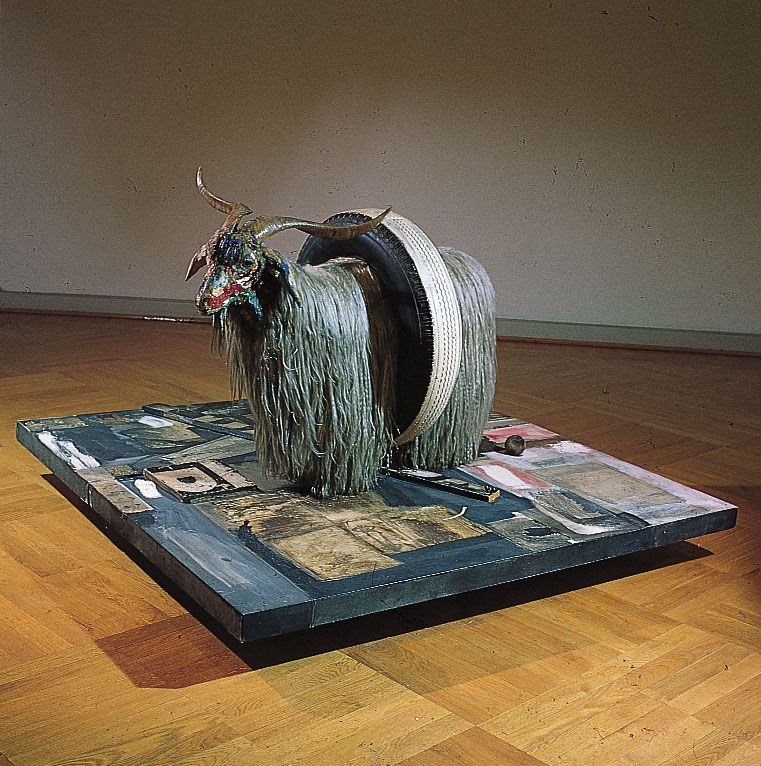
Pop Artist Joe Goode, Known for His Unique Take on the Movement, Dies at 87

Joe Goode: A Restless Visionary of Postwar American Art
Joe Goode, a pioneering figure in the postwar American art scene whose career spanned over six decades, passed away on March 22, 2024—just one day shy of his 88th birthday. Despite an oeuvre as vast and experimental as any of his contemporaries, Goode’s artistic journey was marked as much by his resistance to categorization as by his technical and conceptual ingenuity. His lifelong defiance of artistic convention not only blurred boundaries between painting and sculpture but also questioned the nature of perception itself.
Early Life and Artistic Roots
Born in Oklahoma City in 1937, Goode was introduced to art at an early age by his father, a sign painter and portraitist. Goode’s formative artistic experiences included watching television with his father and sketching characters, an early exercise in observation that would later inform his nuanced approach to visual culture.
Goode’s childhood friendship with fellow artist Ed Ruscha proved consequential. After Ruscha moved to Los Angeles to attend the Chouinard Art Institute (now CalArts), Goode followed suit in 1959. There, he was taught by influential figures such as Robert Irwin and formed friendships with artists like John Altoon and Larry Bell—relationships that would place him at the heart of the burgeoning contemporary art movement in Southern California.
The Cool School and The “Milk Bottle” Breakthrough
Entering the scene during the early 1960s, Goode was loosely affiliated with the “Cool School,” a collective of avant-garde LA artists orbiting the Ferus Gallery. Although he never exhibited at Ferus, the significance of his early work placed him in the same conversations as Billy Al Bengston, Ed Moses, and Wallace Berman.
Goode’s 1961 “Milk Bottle” series became a seminal moment in his career. Each painting featured a milk bottle—rendered both three-dimensionally (as an actual bottle affixed to the canvas) and in two-dimensional paint. The works were a meditation on domestic Americana, blending Pop Art’s graphic boldness with a sculptural sensibility, all while maintaining an undertone of subtle critique. These pieces were included in the watershed 1962 exhibition, “New Paintings of Common Objects,” curated by Walter Hopps at the Pasadena Art Museum. Despite sharing walls with Pop icons like Warhol and Lichtenstein, Goode insisted, “I was always aware that my work wasn’t Pop,” emphasizing his discomfort with being narrowly categorized.
Beyond Pop: A Relentless Experimenter
If Goode once toyed with domestic iconography, he quickly moved past it. His “Stair” sculptures of the mid- to late-1960s blurred the lines between object and representation. These wooden and carpeted staircases—perfectly scaled but leading nowhere—sat enigmatically along gallery walls, functioning as both minimalist structures and surreal interventions.
Later, Goode expanded into celestial and environmental themes, pushing the physical limits of the canvas. His evocative “Cloud” series featured ethereal skies marred by razor-blade incisions, hinting at vulnerabilities beneath idyllic facades. From 1978 to 1983, the “Environmental Impact” series saw him blast canvases with a shotgun, symbolically confronting themes such as ecological fragility and violence.
A Vision Beyond Aesthetics
Goode’s work often dealt with the nature of perception. Whether painting layers of sky or slicing canvases to reveal unseen undercurrents, his desire was always the same: to remind us that every piece of art is a constructed experience. In the 2010s, his “Flat Screen Nature” series, featuring jaggedly cut fiberglass panels, captured both the beauty of the environment and the violence inflicted upon it, underscoring his continued environmental concern.
“He questioned the authenticity of experience through his color-saturated world-view,” noted Michael Kohn, Goode’s longtime gallerist. “He wanted the viewer to remember that no matter how beautiful the painting, you are looking at a man-made image.”
Legacy and Recognition
Despite the breadth and originality of his work, Goode never reached the household-name status of some of his peers. Still, his contributions to multiple art movements—including Pop, Conceptual Art, and the Light and Space movement—cemented his status as a foundational figure in West Coast modernism.
Goode’s works are held in prestigious museum collections worldwide, including the Museum of Modern Art, the Los Angeles County Museum of Art, and the Whitney Museum of American Art. Yet, perhaps his most enduring legacy lies not in one particular series or style, but in his relentless pursuit of new ways to experience and interpret the visual world.
A Restless Eye Meets a Quiet Dawn
Joe Goode’s career is a testament to the enduring power of experimentation. In an art world often dominated by market trends and stylistic consistency, Goode stood apart